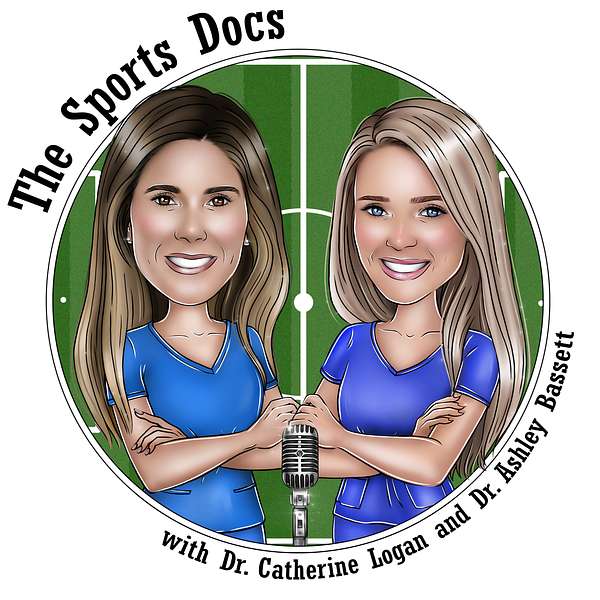
The Sports Docs Podcast
Sports medicine is a constantly evolving field, with hundreds of new articles published each month on the topic. This ever-growing wealth of information can make it challenging to stay updated on the newest approaches and techniques, and to know which data should actually change your practice. Join orthopedic surgeons, Dr. Catherine Logan and Dr. Ashley Bassett, as they chat about the most recent developments in sports medicine and dissect through all the noise.
On each episode of The Sports Docs podcast, the hosts will tackle a specific injury – from ACL tears to shoulder instability – and review the top research from various high-impact journals that month, including The American Journal of Sports Medicine, Arthroscopy: The Journal of Arthroscopic and Related Surgery, Sports Health, Journal of Shoulder and Elbow Surgeons, and more. The Sports Docs will also be joined by experts in the field of sports medicine – orthopedic surgeons, nonoperative sports medicine specialists, athletes, physical therapists, athletic trainers and others – to provide a fresh and well-rounded perspective based on their unique experiences.
The Sports Docs – Dr. Logan & Dr. Bassett – are friends & former co-residents from the Harvard Combined Orthopaedic Residency Program, who went onto esteemed sports medicine fellowships at The Steadman Clinic and The Rothman Institute, respectively. Dr. Logan practices in Denver, CO, and serves as Team Physician for Men's USA Lacrosse & as a Team Physician for U.S. Ski & Snowboard. Dr. Bassett is the director of the Women’s Sports Medicine Center at the Orthopedic Institute of New Jersey and practices across northern NJ, primarily in Morris and Sussex Counties.
Together, they will bring monthly conversations on how to care for athletes of all ages and levels of play, with a healthy mix of cutting-edge science and real-world application.
The Sports Docs Podcast
44. LIVE from AOSSM: Challenging Cartilage Injuries (Dr. Sabrina Strickland & Dr. Seth Sherman)
Dr. Sabrina Strickland is an associate professor of orthopaedic surgery and an attending surgeon at Hospital for Special Surgery . She is active member of many societies and research groups, including the International Cartilage Repair Society and the International Patellofemoral Study Group.
Dr. Seth Sherman is the Director of the Sports Medicine Fellowship at Stanford University Orthopaedics and is a Stanford University Football team physician. He is Chairman of the AAOS Sports Medicine/Arthroscopy committee and is also a member of the International Patellofemoral Study Group.
Both Dr. Strickland and Dr. Sherman publish and lecture extensively on the topic of knee joint preservation, cartilage restoration and specifically patellofemoral cartilage disease - so we’re excited to hear them speak more this topic!
We are narrowing the focus of our conversation today to osteotomies. We just did a two-part episode with Dr. Cassandra Lee that tackles all the different cartilage restoration options for the patellofemoral joint. So go check that out if you want to hear more about when to choose OATS vs. OCA vs. MACI. But for today: let’s chat about osteotomies.
In this episode, we discuss:
What are some key findings to look for on exam and imaging to determine if a realignment osteotomy is needed?
We are familiar with the tibial tubercle trochlear groove (TT-TG) measurement, but what is the Sagittal TT-TG (sTT-TG) distance and what does it tell us?
How should a tibial tubercle osteotomy (TTO) be customized to address different areas of cartilage pathology? (Check out our Instagram - @thesportsdocspod - to see different types of TTOs based on location of cartilage lesion and/or presence of instability in the setting of malalignment.)
How can the TTO surgical technique be modified to minimize risk of complications when performing a complete tubercle detachment? Image 3 shows four surgical tips for lessening complication risk.
There are other osteotomies besides TTO to address patellofemoral pathology — including a derotational distal femoral osteotomy. What are the indications for this procedure?